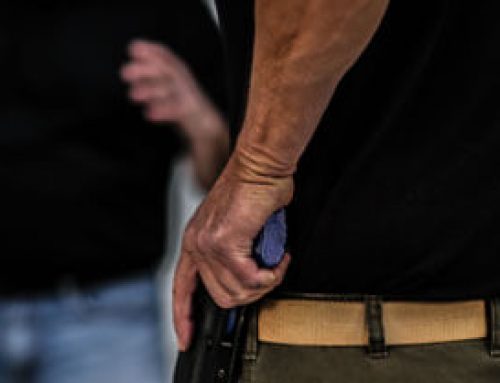Given the way things are going today, both law enforcement professional and concerned citizen alike must be prepared to confront anything from bullying to full scale civil unrest and everything in between (including a never-ending pandemic). The underlining preparation question is ‘Are you ready?’ but for what? Top contenders are an active threat such as a shooter or edged weapon attack, home invasion, vehicle assault or a medical emergency.
The general rule of thumb, and “A” answer, is to avoid the need to engage an active threat altogether by maintaining good situational awareness. Being mentally and visually connected to your environment can provide you with the earliest possible warning of something about to go wrong.
Forewarned may be forearmed, however, you’re not always on you’re “A”-game and even if you were, there are certain circumstances where you may find yourself in the wrong place at the wrong time and unable to avoid or escape an active threat. Taking one step back prior to confronting an undesired event, how can you be prepared for the unexpected and further maintain a functional state of daily readiness? The answer comprises three parts: mental state, physical conditioning and everyday carry (EDC) gear.
Mental State
The most prevalent mindset permeating our civilian community is “Well, it’s never going to happen to me.” The second most prevalent is “Someone else will handle it – isn’t that what we pay our cops for?” Both are diametrically opposite to the one mindset that will adequately prepare you for the unexpected and that is “Personal security is my responsibility.” Adopting this mindset puts you in the best possible pre-event mental state in preparation for an active threat.
Mental toughness is also part and parcel of a mental state of readiness. A paramount component of mental toughness is your accepting the fact that bad things can and do happen to good people – not in some far-off unimaginable future date, but the split second you walk out that door.
Another important part of mental toughness is combat resilience – that is your decision of self-determination that no matter how many times you get shot, stabbed or knocked down that you will continue to fight. It’s a decision you can make right here right now while reading this.
Lastly, but certainly not the least important component of mental toughness, is your willingness to cause harm to another human being in self-defense and/ or in protection of your loved ones. If for whatever reason you cannot or are unwilling to raise your hand against another human, then you most certainly will not do so should you find yourself in a scenario warranting such appropriate use of force.
Physical Conditioning
You don’t need to be a triathlete or even work out every day, but it is strongly recommended to maintain some nominal level of physical conditioning. Why? Because there are only three response options to any clear and present physical danger – flight, fight or freeze – there are no other choices.
Given the example of an active killer, you may need to create space and stay mobile. Mobility equates to survivability. Distance and movement are what make you a more difficult target. If you’re physically unable to create distance and stay mobile, which is the “A”-answer, then your only remaining options to either stand toe-to-toe and fight (which would require even greater levels of physical skill and conditioning), or to surrender.
Finding yourself engaged with an active threat may require enough physical stamina to at least run across a parking lot, climb a flight of stairs, haul ass through a supermarket, run to your car, or get yourself (and anyone with you) behind good cover or concealment.
No need to run out and buy a gym membership today, but going for a walk, or through a stretching routine, or hiking or something that gets your blood flowing is better than nothing at all.
Think about the amount of physical duress that you must withstand if involved in a life-or-death violent physical altercation. If your maximum physical activity is lifting yourself off the couch to go to bed at night, then you may want to seriously consider an alternative plan that may better prepare you. Set realistic expectations and attainable goals for your physical conditioning routine. Do at least one thing every day to make yourself a better operator.
EDC Gear
Exigent circumstances may demand the need for additional physical tools to support your mental and physical conditioning.
When it comes to EDC gear, most people think guns, ammo and knives which are certainly important considerations. However, your not-so-sexy EDC gear should include non-restrictive clothing able to withstand rigorous physical activity and abrupt movement. Footwear is also often overlooked. Shower slippers are for the shower. If the situation demands you run 300 yards to save your life and you have the choice to do in flip-flops or running shoes, which would you prefer?
Lastly but certainly not least is basic first aid. You don’t need a surgical trauma kit, but you should have the basics readily accessible in your car, office, home, etc., such as assorted bandages, field dressings, a tourniquet and the training to apply them.
Being mentally prepared means that your daily mantra is ‘your personal security is your responsibility.’ It means that your mental toughness includes your accepting the fact of life that bad things can and do happen to good people, deciding that you will continue to fight regardless of circumstance, and having the will to apply extreme physical violence to another human being if warranted. Being prepared is also about maintaining a nominal level of physical conditioning and to have a readily accessible medical kit as part of your EDC gear.
Whether we choose to accept it or not, to prevail in the world we now live in requires mental and physical preparedness. Maintaining both, affords you a functional state of daily readiness.






